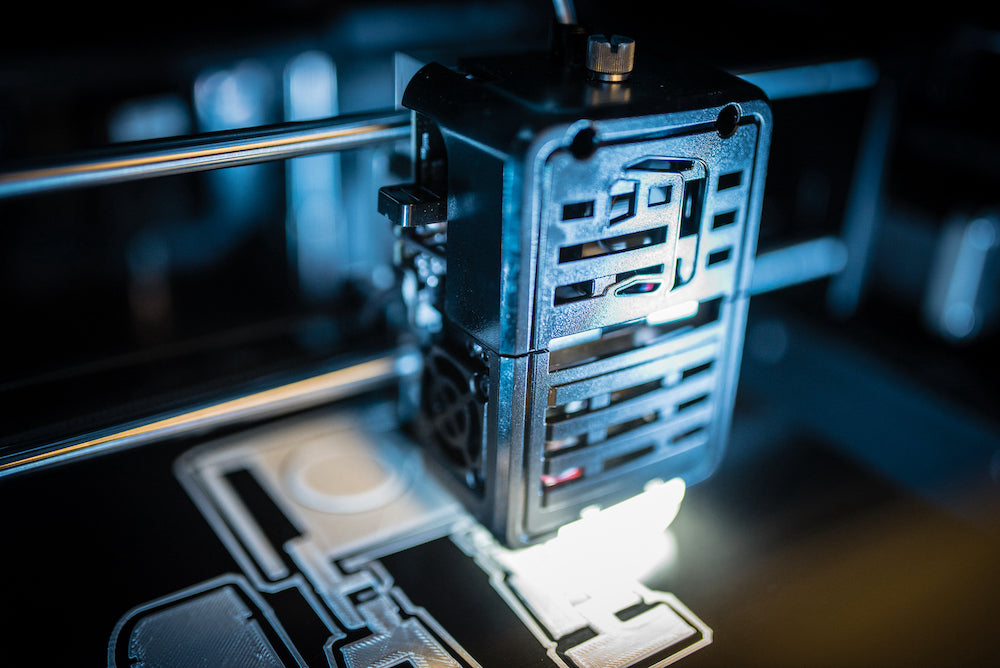Returning to school after a long break, like summer vacation or March break, means that your 3D printer has been sitting unused for awhile. While your 3D printer is still functional, it does require a few maintenance tasks to bring make it fully operational again. Making sure your 3D printer is in tiptop shape after a break will help to avoid failed prints, filament clogs, or worse, broken machine parts!
Here are our top 5 recommendations for using your 3D printer after it's been sitting for a while.
1. Clean Everything
This is probably the most important recommendation of them all. Before queuing up your printer for a big project, you'll want to make sure it's clear of dust, leftover printing debris, and both the nozzle and print bed are clean.
Wipe away debris from inside the printer, especially anything that may be caught under the print bed. Use a cloth to wipe off the surface of the 3D printing bed. If you have a Cubicon 3D printer with a heated bed, you can use a bit of acetone to remove any plastic residue.
You should also get into the habit of using the wire bristle to clean off the nozzle and auto-level touch points on the print bed. If there's even the smallest amount of plastic on the nozzle or auto-level points, that could lead to an auto-level failure. You may need to pre-heat the extruder nozzle for tough, stuck-on plastic.
We have a full blog post title 'Basic 3D Printer Maintenance' here.

2. Check Your Filament
Filament doesn't last forever, and it's likely the main culprit if you're continually having print failures despite a clean printer.
If your filament has been open to the air for more than 4-6 months there's a good chance it will cause printing failures. Filament takes on moisture over time. It shouldn't be brittle, but should bend and flex easily (enough to the point where you could tie it in a knot). If it's brittle, unless you can dry your filament in a dehydrator, it's likely garbage.
It's best practice to keep your filament sealed in an airtight container. You can get special filament roll containers from Amazon but storing the roll in a plastic ziplock bag or plastic tote will also help.

3. Do a Test Print
Once your 3D printer is clean and you've checked the condition of your filament, you'll want to preform a test print. We recommend printing something small and relatively quick to ensure everything is functioning properly.
Here are some files that make great test prints:

4. Clog, Jams, & Failures (Oh My!)
If your test print is successful, you're good to go with your 3D printing project! Just make sure there isn't any leftover residue on the nozzle or bed from your test print.
If you're test print isn't successful, it's likely a clog or jam in the nozzle, or an auto-leveling failure.
Clogs and jams are the most common problems that prevent a successful print. You'll know that it's a clog or jam if you're printer completes the auto-leveling process and starts printing but no actual filament is coming out of the nozzle.
We recommend using the 'load' function on your printer to purge any old filament left in the nozzle. This will allow you to dispose of any leftover filament in the nozzle and ensure a clean steady stream of the new filament. This is also a useful tip when you're switching filament colours (especially dark to light). Additionally, you can use the pre-heat function to heat up the nozzle and use the plunger tool to push through any jammed filament.
If you run into an auto-leveling failure, you'll see some sort of error message on your printer letting you know. Auto-leveling failures are most often caused by leftover plastic residue stuck to the nozzle or the sensor pads on the printing bed. See tip #2 for cleaning recommendations.

5. Replace Filter & Tidy Filament Roles
It's recommended that the HEPA filter in your enclosed 3D printer is changed once a year. However, given the inconsistent use of 3D printers over the pandemic, this isn't a great measure for current times. If you remove the filter from your printer, it should be white. If the filter is grey, dusty, or has any sort of residue you should replace it immediately!
If your filament roles have sat out for a while, been packed up, or shuffled around, it's possible for them to get tangled. Be sure to check your filament role for tangles before loading it into your printer. Your filament role should also be mounted on a stand that allows it to move freely.

 That concludes our 5 top tips for using your 3D printer after a break! Completing these 5 recommendations will help ensure printing success and prevent failures, clogs, or broken parts.
That concludes our 5 top tips for using your 3D printer after a break! Completing these 5 recommendations will help ensure printing success and prevent failures, clogs, or broken parts.
As always, if you have any questions or concerns about your 3D printer from InkSmith, contact our Technical Support team at tech@inksmith.ca. You can also check out our new and improved Frequently Asked Questions page.


Unboxing the Cubicon Style Plus 3D Printer
Locating Your Machine's Serial Number